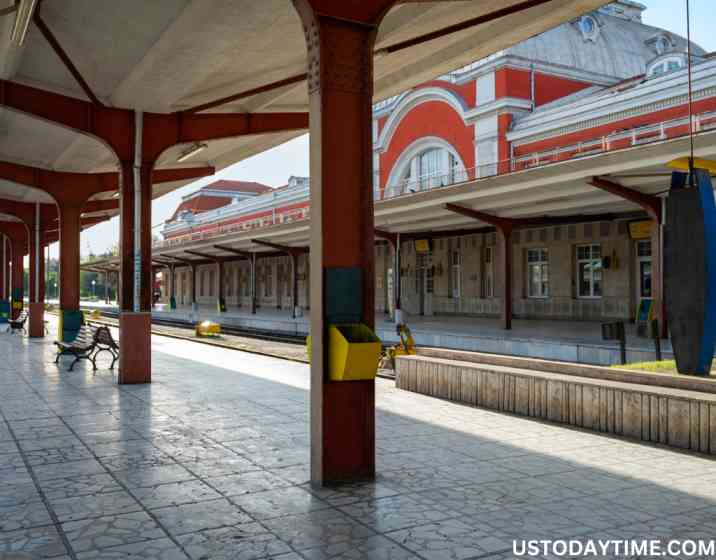The Metro Manila Subway project has long been a hot topic of conversation in the Philippines. Its ambitious goal to ease the daily traffic chaos in the metro area has garnered both excitement and concern. One of the most debated aspects of the project involves its planned route under Corinthian Village, a residential area in Quezon City. The proposal to dig beneath this exclusive neighborhood has raised eyebrows, leading to widespread discussions and, in some cases, opposition. But why is this such a controversial issue? Let’s dive deep into the matter and explore the reasons behind the growing concerns.
Introduction: Metro Manila Subway To Go Under Corinthian Village
The metro manila subway to go under corinthian village is an ongoing transportation initiative aimed at alleviating the congestion that plagues the Philippine capital. With over 13 million people living in the Metro Manila area, commuting has become a daily struggle for residents. The subway project is seen as a solution to ease traffic and reduce carbon emissions, providing a much-needed alternative to road transport. But the controversy surrounding the portion of the subway that will pass under Corinthian Village has sparked intense debate among residents, local authorities, and urban planners alike.
What is the Metro Manila Subway?
Before diving into the specifics of the Corinthian Village route, it’s essential to understand the overall concept of the Metro Manila Subway. This underground rail system, set to run from Quezon City to Taguig, is the first of its kind in the country. The subway promises to drastically cut down travel times across the metro, provide a more sustainable alternative to car use, and improve the overall quality of urban transport. With stations planned in key locations such as Quezon City, Pasig, Makati, and Taguig, the subway is expected to serve hundreds of thousands of commuters daily.
The project is being funded by both the Philippine government and foreign loans, with construction work having begun in 2020. However, as with any major infrastructure project, controversies are inevitable—especially when it impacts residential communities like Corinthian Village.
The Proposed Route Under Corinthian Village
One of the most contentious parts of the Metro Manila Subway’s planned route is the section that will run underneath Corinthian Village, an upscale residential area in Quezon City. This area, known for its quiet streets and affluent residents, is home to some of the most influential people in the country. The subway, as it is currently designed, will pass directly beneath this village, with stations and tunnels intersecting the neighborhood.
For residents of Corinthian Village, the prospect of construction work so close to their homes is unnerving. The thought of massive excavation machines operating just a few meters below the surface has led to widespread concerns about the safety and stability of their properties.
Why is the Route Controversial?
The decision to route the subway under Corinthian Village is seen as controversial for several reasons. First and foremost, the risk of potential damage to the structures above ground is a significant concern. The construction of a subway tunnel involves massive drilling, and the vibrations from such operations could cause cracks or even structural damage to homes in the area.
Additionally, there are fears about the long-term environmental impact. Digging tunnels can disrupt the local ecosystem, affect the water table, and potentially lead to flooding. Many residents argue that these risks were not properly considered when the route was being planned.
Another major factor contributing to the controversy is the perceived lack of consultation with the residents of Corinthian Village. Many feel that they were not adequately informed about the project’s impact on their homes, and the idea of having a subway tunnel run directly beneath their properties feels like an infringement on their rights.
Impacts on Corinthian Village Residents
The residents of Corinthian Village are understandably concerned about the disruption that the subway construction could bring. For them, this is not just an issue of inconvenience; it’s a matter of safety and security. The excavation work required for the subway will likely cause noise, dust, and traffic disruptions. But the biggest fear is that the tunnel could undermine the stability of their homes.
Many residents have already begun to form groups to protest the project. They argue that the government should explore alternative routes that would avoid passing through such a densely populated and high-value area. Others are calling for a reassessment of the project to ensure that the risks are properly mitigated.
The Economic Arguments For and Against the Subway
Proponents of the Metro Manila Subway argue that it will bring significant economic benefits to the region. A faster, more efficient public transport system will lead to reduced traffic congestion, making it easier for people to get to work, school, and other essential destinations. This, in turn, could boost productivity, reduce stress, and improve overall economic activity.
However, critics argue that the immediate economic costs of the subway, especially in terms of property damage and the potential loss of value for homes in Corinthian Village, may outweigh the long-term benefits. Some residents fear that their homes will lose value once the construction begins, and others worry that the disruption will make living in the area unbearable.
Environmental Concerns: Risks and Mitigation
Any large-scale construction project inevitably raises environmental concerns. In the case of the Metro Manila Subway, the main environmental issues revolve around the risk of groundwater contamination, air pollution from construction activities, and the impact on the local flora and fauna.
To address these concerns, the government has promised that environmental safeguards will be put in place, such as monitoring the construction site for potential leaks or spills and ensuring that local wildlife is not harmed by the excavation process. However, residents remain skeptical that these measures will be enough to fully mitigate the environmental impact.
Urban Planning and the Future of Metro Manila
The controversy surrounding the Metro Manila Subway’s route also raises broader questions about urban planning in Metro Manila. As the city continues to grow and develop, there is an urgent need for more sustainable and efficient transport solutions. While the subway promises to address these challenges, it also highlights the difficulties of balancing progress with the preservation of existing communities.
As the debate over the subway route continues, it’s clear that urban planners and government officials must carefully consider the interests of all stakeholders, from residents to commuters, and ensure that the benefits of the subway are shared equitably.
The Role of Public Consultation
One of the main criticisms of the Metro Manila Subway project is the lack of proper public consultation. Many residents of Corinthian Village argue that they were not adequately consulted before the decision was made to run the subway beneath their homes. The government has defended its decision, claiming that the project has undergone a thorough review and that the benefits outweigh the risks.
However, public consultation is an essential part of urban planning, especially when it comes to projects that will directly impact local communities. Many believe that more could have been done to engage with residents of Corinthian Village and other affected areas to address their concerns and find common ground.
Comparisons to Other Global Subway Projects
To better understand the potential impact of the Metro Manila Subway, it’s helpful to look at similar projects around the world. Cities like Tokyo, New York, and London have all built extensive subway networks, many of which run through densely populated residential areas.
In some cases, these projects have faced similar opposition from local residents. However, with proper planning and communication, many of these issues have been resolved. For instance, in London, the Crossrail project encountered protests from residents but ultimately moved forward with extensive mitigation measures.
Public Opinion and Government Response

Public opinion on the Metro Manila Subway has been divided. While many people are excited about the prospect of a modern, efficient transport system, others are worried about the risks involved. The government has acknowledged these concerns and has promised to take steps to ensure that the project is carried out responsibly.
As the construction continues, it will be interesting to see how the government responds to the growing protests and whether any changes will be made to the route or construction methods to address the concerns of affected residents.
Alternative Solutions to the Subway Controversy
While the Metro Manila Subway is seen as an important long-term solution to the city’s transportation woes, some have suggested alternative routes or solutions that would avoid passing under Corinthian Village. Others have proposed investing more heavily in other forms of public transportation, such as bus rapid transit (BRT) systems or light rail transit (LRT), which could provide relief without disrupting existing communities.
The Legal Landscape: Is the Subway a Violation?
Another aspect of the controversy is the legal question of whether the Metro Manila Subway project violates any property rights. Residents of Corinthian Village are exploring legal options to challenge the government’s decision to build the subway beneath their homes. While the government argues that the project is in the public interest, some residents believe their rights are being overlooked.
What Are the Long-Term Benefits of the Subway?
Despite the controversy, the Metro Manila Subway has the potential to bring significant long-term benefits to the region. By reducing traffic congestion, providing a more sustainable transportation option, and improving air quality, the subway could transform how people live and work in Metro Manila. If executed well, it could be a game-changer for the city’s urban development.
Conclusion: Balancing Progress and Community Interests
The Metro Manila Subway project represents a major step forward in addressing the traffic crisis in the capital. However, the route passing under Corinthian Village has stirred up significant controversy. As the project moves forward, it’s crucial that the government and urban planners find a way to balance the need for progress with the concerns of local communities. Only through open dialogue, thoughtful planning, and careful mitigation of risks can this ambitious project succeed in transforming Metro Manila’s transport landscape.
FAQs
Why is the Metro Manila Subway route under Corinthian Village controversial? The controversy arises from concerns about the safety of homes, environmental risks, and the perceived lack of consultation with residents before deciding the route.
How will the Metro Manila Subway benefit the people of Metro Manila? The subway is expected to reduce traffic congestion, cut down travel times, and provide a sustainable alternative to road transport.
What are the potential environmental impacts of the subway construction? The main environmental concerns include potential groundwater contamination, air pollution, and disruption to local wildlife, although the government has promised mitigation measures.
Can the route be changed to avoid Corinthian Village? While there are calls to reconsider the route, changing it may be difficult due to logistical and financial constraints, although alternative solutions are still being discussed.
What will happen if the residents of Corinthian Village take legal action? Legal challenges could delay the project and force the government to reassess the route or construction methods, depending on the outcome of the case.



